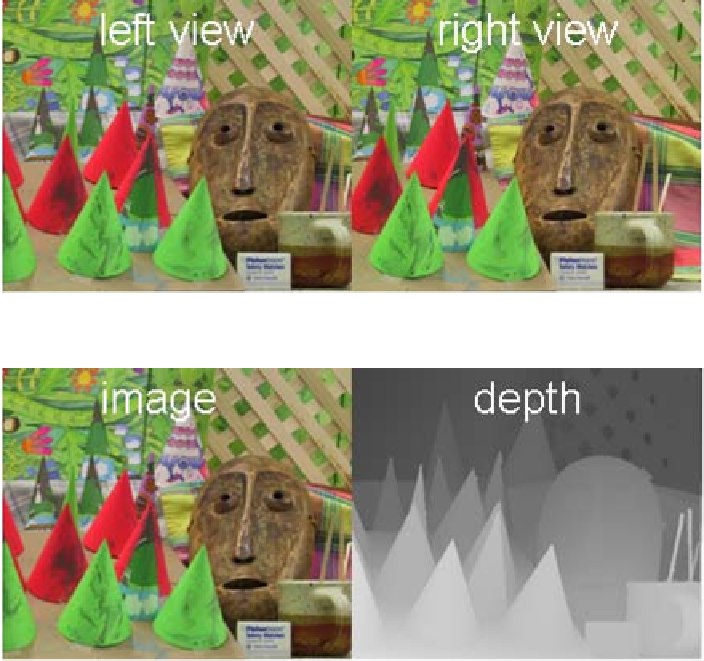Information Technology Reference
In-Depth Information
Fig. 5
Left-right image pair. Image courtesy of NXP Semiconductors.
Fig. 6
Image plus depth map. Image courtesy of NXP Semiconductors.
format, in order to defer the upgrade of the transmission infrastructure. Some ex-
amples of such formats include frame doubling, side-by-side, interleaved and
checkerboard, which can be seen in Fig. 7.
The frame doubling approach uses a single 2D stream to transmit alternating
left and right images, halving the effective frame rate. This is the most suitable
format for shutter-glass based systems and 3D projectors using rotating polarizers.
Side-by-side places the left and right images next to each other. This either re-
quires doubled horizontal resolution, or halves the horizontal resolution of left and
right images, fitting them in the original 2D image size. A very similar image con-
figuration is over/under.
Interleaving places rows of the left view into even lines, and rows of the right
view into odd lines (or the same reversed). As with side-by-side, two possibilities
are doubling image size and keeping the resolution of the images or halving the
resolution of the component images to fit them into a 2D frame with the same size.
Interleaving can also work in a vertical configuration. This representation is the
best choice for a 3D display based on micro-polarizers.

